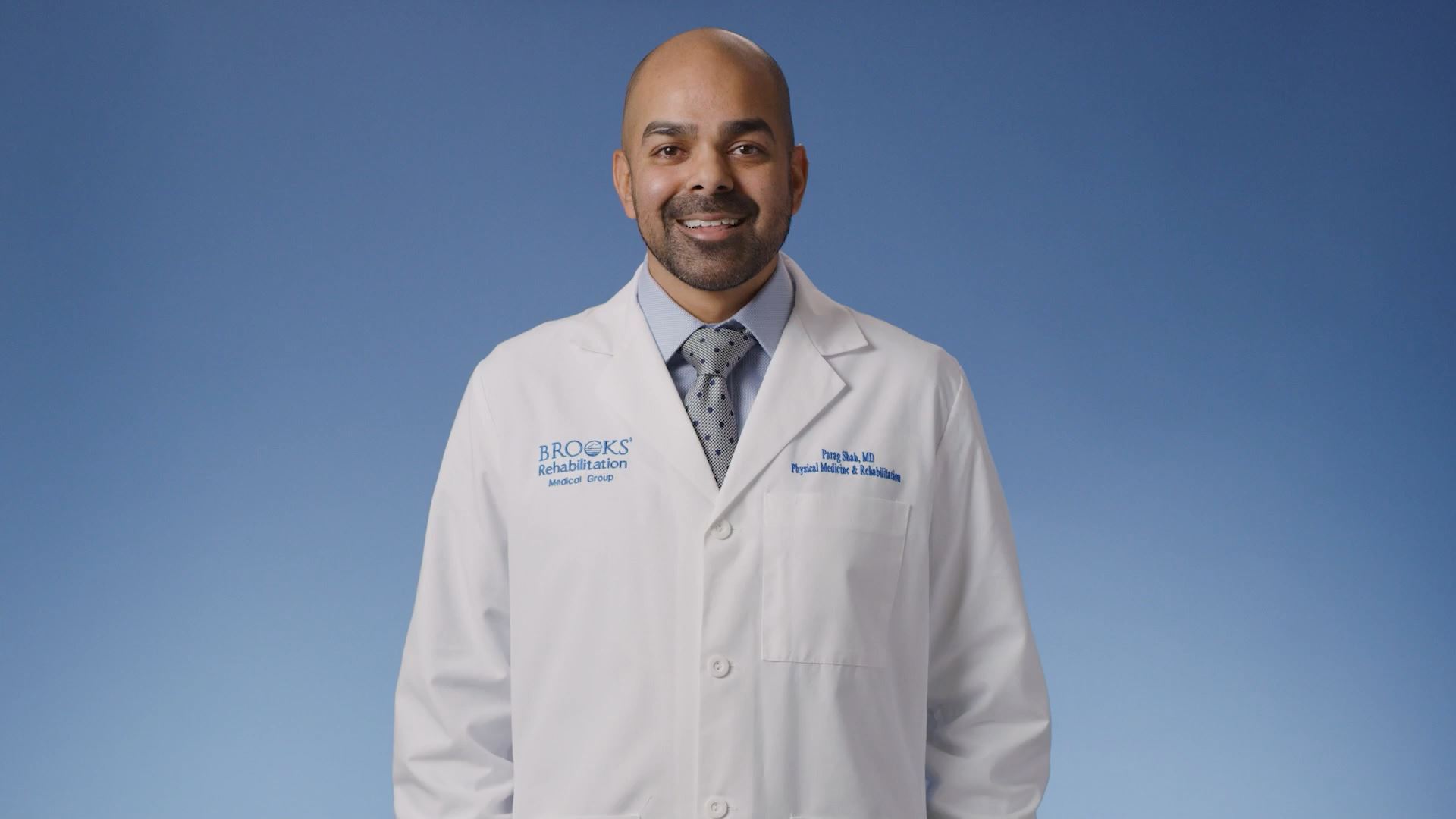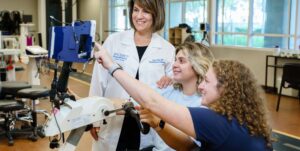It’s Heart Month – Let’s Talk Cardiac Rehab

Back to physical health resource hub
In 1964, President Lyndon B. Johnson first proclaimed February as “American Heart Month.” Now, 57 years later, we know that heart disease is still a top health threat facing all of us. This threat has been exacerbated by the pandemic, in which stay-at-home orders have often resulted in poorer diets, less physical activity and the delay of check-ups and treatments.
If, unfortunately, a cardiac event – like a heart attack – occurs and physical rehabilitation is necessary, Brooks is ready with the latest rehab treatments and options. We spoke with Parag Shah, MD, who currently serves as Stroke Medical Director at Brooks Rehabilitation and provides care for patients with cardiac conditions. Dr. Shah will be the Medical Director at our new 60-bed, state-of-the-art inpatient rehabilitation hospital, opening at our Bartram Park campus in 2022.
Q: How are cardiac patients generally referred to Brooks for rehab?
Dr. Shah: We see quite a number of complex cardiac patients. We work closely with cardiology teams and the cardiothoracic surgeons in the area and regionally. They have confidence in our program, that we can provide exceptional medical care and get great outcomes for their patients.
Q: A cardiac patient could be referred to either inpatient or outpatient rehab care?
Dr. Shah: Yes. Let’s say, for example, I went to an acute-care hospital with a cardiac event. If I’m stable to discharge home, and it’s safe to discharge me home – or my family can care for me safely at home – then I’ll probably go home. Outpatient rehab may be needed for things like endurance and health education. On the other hand, the acute-care cardiology team could feel I need more intense oversight. Maybe I was in the acute-care hospital longer and have lost a lot of strength, or I have balance or other safety or care issues. Then I would go to an inpatient rehab setting. A cardiac patient, just by the nature of the injury, typically has a much quicker recovery process than, say, a stroke patient. The cardiac typical length of stay might be seven or 10 days. So, all those factors go into determining the most appropriate setting for their rehabilitation.
Q: What goes into cardiac rehab? Has it changed over the years?
Dr. Shah: There isn’t necessarily new technology, but the approach may be different. We look to start rehab – even intense rehab – earlier. From the physical side, there’s endurance and strength; checking risk factors, for example obstructive sleep apnea (which can increase the risk of cardiac events); and optimizing medications. We work intensely on lifestyle changes, like diet modifications, managing weight and cholesterol; being more active and exercising more; smoking cessation and the psychological aspects of smoking; and helping with their confidence and their ability to go home.
Q: So, education is obviously a big piece?
Dr. Shah: Yes – you’re hoping to empower patients by educating them. So, let’s say you had a heart attack. How can we help educate you to prevent another one? Sometimes that gets tough. Some patients don’t want to change their diet or their smoking habits. So at least we empower them by educating them and letting them know it’s their decision – but we’re always here to help them.
Q: You just mentioned psychological aspects of smoking and helping with their overall confidence. Can you expand on that?
Dr. Shah: Psychological services are an integral part of any rehabilitation program. If a patient has been through something traumatic or they’ve been in the hospital a while, they can feel defeated, depressed or ready to give up. We introduce someone from our psychology department as another team member. They can provide help during the rehab stay, which makes a big difference.
Q: I understand Brooks also provides rehab for heart (and other) transplant patients. Can you explain?
Dr. Shah: We work closely with the transplant program at Mayo Clinic – Jacksonville. They do heart, lung, liver, kidney, and bone marrow transplants. On average, they send us about five to 10 heart transplants a year. We also get patients from University of Florida Gainesville and Tampa General in Tampa, Florida. We started working closely with the transplant programs about three years ago to develop a transplant protocol process to help streamline the care, help with medications, weekly check-ins and so on. It has really helped guide and build successful recoveries.


